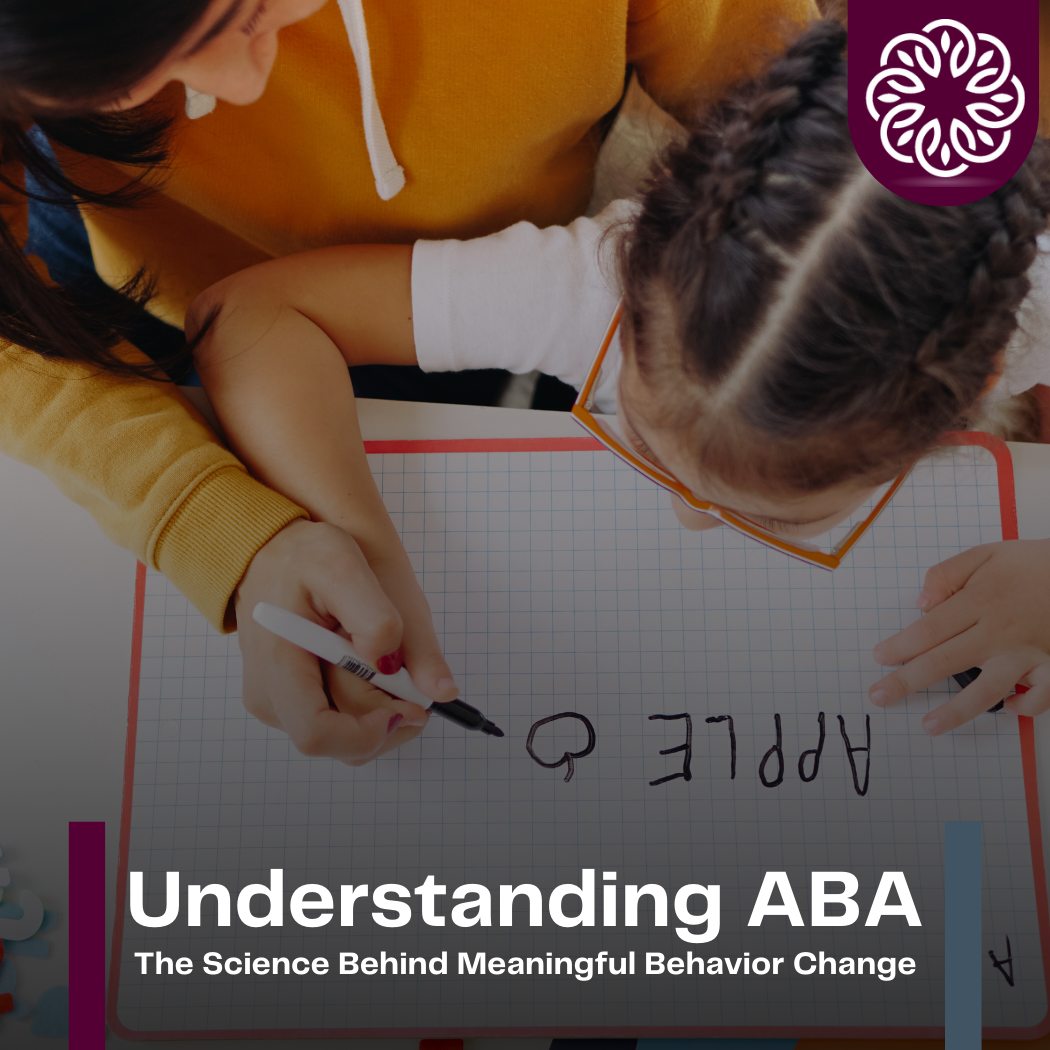Understanding ABA – The Science Behind Meaningful Behavior Change

Publish In 2025-03-28
Understanding ABA – The Science Behind Meaningful Behavior Change
Have you ever wondered why some behavior strategies work wonders while others fall flat? The difference lies in science—specifically, Applied Behavior Analysis (ABA). ABA isn't just a buzzword in therapy circles. It's a research-backed, data-driven approach that helps individuals of all ages improve behavior and quality of life. Whether you're a parent, educator, or healthcare professional in the UAE, understanding ABA can empower you to make real, lasting change.
What is Applied Behavior Analysis (ABA)? ABA is the scientific study of behavior and how it is influenced by the environment. It involves applying evidence-based principles to bring about meaningful and positive changes in socially significant behaviors.
Key Elements:
-
Uses behavioral principles like reinforcement and punishment
-
Applies structured, consistent strategies
-
Focuses on measurable, observable behavior
-
Tracks progress through data
ABA is not limited to individuals with autism, though it is widely used in that context. It's also effective in education, mental health, rehabilitation, and even workplace performance.
Why ABA Works: Evidence-Based Practice Unlike many other intervention models, ABA is grounded in decades of scientific research. Every strategy is tested, refined, and validated before being implemented. This ensures:
-
Accountability and effectiveness
-
Ethical standards
-
Replicable outcomes
Why it Matters in the UAE: In a culturally diverse environment like the UAE, the structured and ethical nature of ABA ensures it can be adapted respectfully and effectively across communities.
Historical Roots: The Influence of B.F. Skinner ABA stems from the field of behaviorism, pioneered by B.F. Skinner. He emphasized the importance of observable behavior and how it is shaped by environmental factors. ABA continues this legacy by focusing on how consequences affect future behavior.
Example: A child learns to request water using sign language. The behavior is reinforced when the child receives water promptly. Over time, the skill becomes natural and frequent.
Real-Life Examples of ABA in Action
-
In Autism Therapy: Teaching children to communicate needs, follow instructions, and build social skills.
-
In Schools: Helping teachers manage classroom behavior through positive reinforcement systems.
-
In the Workplace: Improving productivity through feedback and goal-setting based on behavioral data.
-
In Everyday Life: Helping individuals quit smoking or maintain fitness by tracking habits and reinforcing desired behaviors.
Benefits of ABA for Families and Professionals
-
Empowers caregivers to become change agents
-
Encourages consistency across home, school, and therapy
-
Builds independence and confidence in individuals
-
Provides measurable and visible progress
In the UAE, where many families seek high standards of care and culturally sensitive support, ABA offers a framework that is adaptable, respectful, and inclusive.
The Role of ABA Professionals ABA interventions are typically led by Board Certified Behavior Analysts (BCBAs) or licensed therapists with expertise in behavioral science. They conduct assessments, design intervention plans, and train caregivers or educators in implementation.
Ethical Practice in ABA The BACB (Behavior Analyst Certification Board) sets ethical guidelines ensuring:
-
Dignity and respect for clients
-
Cultural responsiveness
-
Ongoing professional development
Key Takeaway ABA is a powerful, research-backed science that transforms lives by turning everyday interactions into opportunities for growth and learning. Whether you're working with children, teens, or adults, understanding the fundamentals of ABA equips you with the tools to inspire positive change.
References
-
Baer, D. M., Wolf, M. M., & Risley, T. R. (1968). Some current dimensions of applied behavior analysis. Journal of Applied Behavior Analysis, 1(1), 91–97. https://doi.org/10.1901/jaba.1968.1-91
-
Cooper, J. O., Heron, T. E., & Heward, W. L. (2020). Applied behavior analysis (3rd ed.). Pearson Education.
-
Miltenberger, R. G. (2016). Behavior modification: Principles and procedures (6th ed.). Cengage Learning.
-
Skinner, B. F. (1953). Science and human behavior. Macmillan.
-
Sundberg, M. L., & Michael, J. (2001). The benefits of Skinner's analysis of verbal behavior for children with autism. Behavior Modification, 25(5), 698–724. https://doi.org/10.1177/0145445501255003